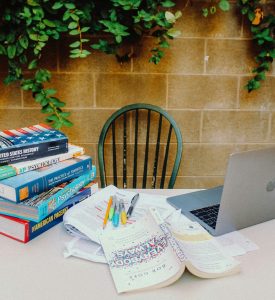Citing & Referencing
Introduction to Citing and Referencing

While academic integrity calls for work that is a result of your own effort, scholarship requires that you learn from others. In the world of academic scholarship you are expected to learn new things from others and come to new insights on your own. There is an implicit understanding that as a student you will be using others’ knowledge, as well as your own insights, to create new scholarship.
Working and writing with integrity requires accurately representing what you contributed, as well as acknowledging how others have influenced your work. To do this in a way that meets academic integrity standards you must acknowledge the parts of your work that develops from others’ efforts. You do this by citing and referencing the work of others. Plagiarism occurs when a person fails to acknowledge the work of others. It is the act of passing off someone else’s work as one’s own and is a serious breach of academic integrity.
Citing and referencing
Citing and Referencing is a two step process:
Citing involves showing your readers exactly where you have used the work of another within your text and signposts that a full reference for their work is available at another point in your document.
Referencing involves providing sufficient detail (usually at the end of your document) to enable your readers to identify the sources you have cited, and to find these sources for themselves.
Each in-text citation will have a corresponding reference, and vice-versa.
Example of an in-text citation:
Example of a reference (contained in a list at the end of the piece of work):
(Examples taken from “All Aboard, Referencing Module“)
Short Video: Avoiding Plagiarism
The following video illustrates some of the benefits of citing and referencing, and highlights that good citing and referencing are essential to avoid plagiarism. The narrator also speaks about some of the basic principles of citing and referencing, as well as citing and referencing styles. These topics are covered on the following pages of this guide.
Avoiding Plagiarism by Indian River State College Libraries is licenced under a Creative Commons Attribution Licence (reuse allowed)

